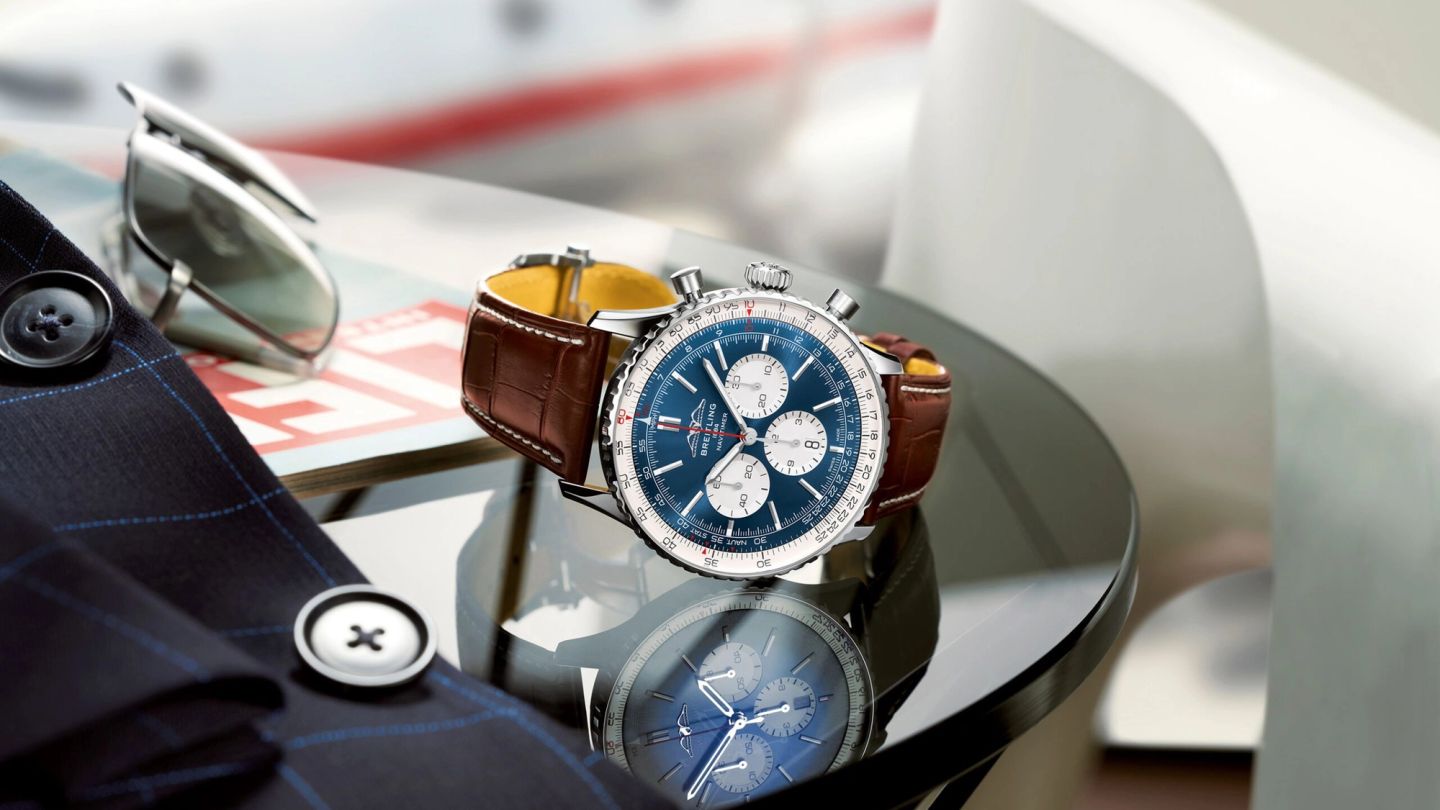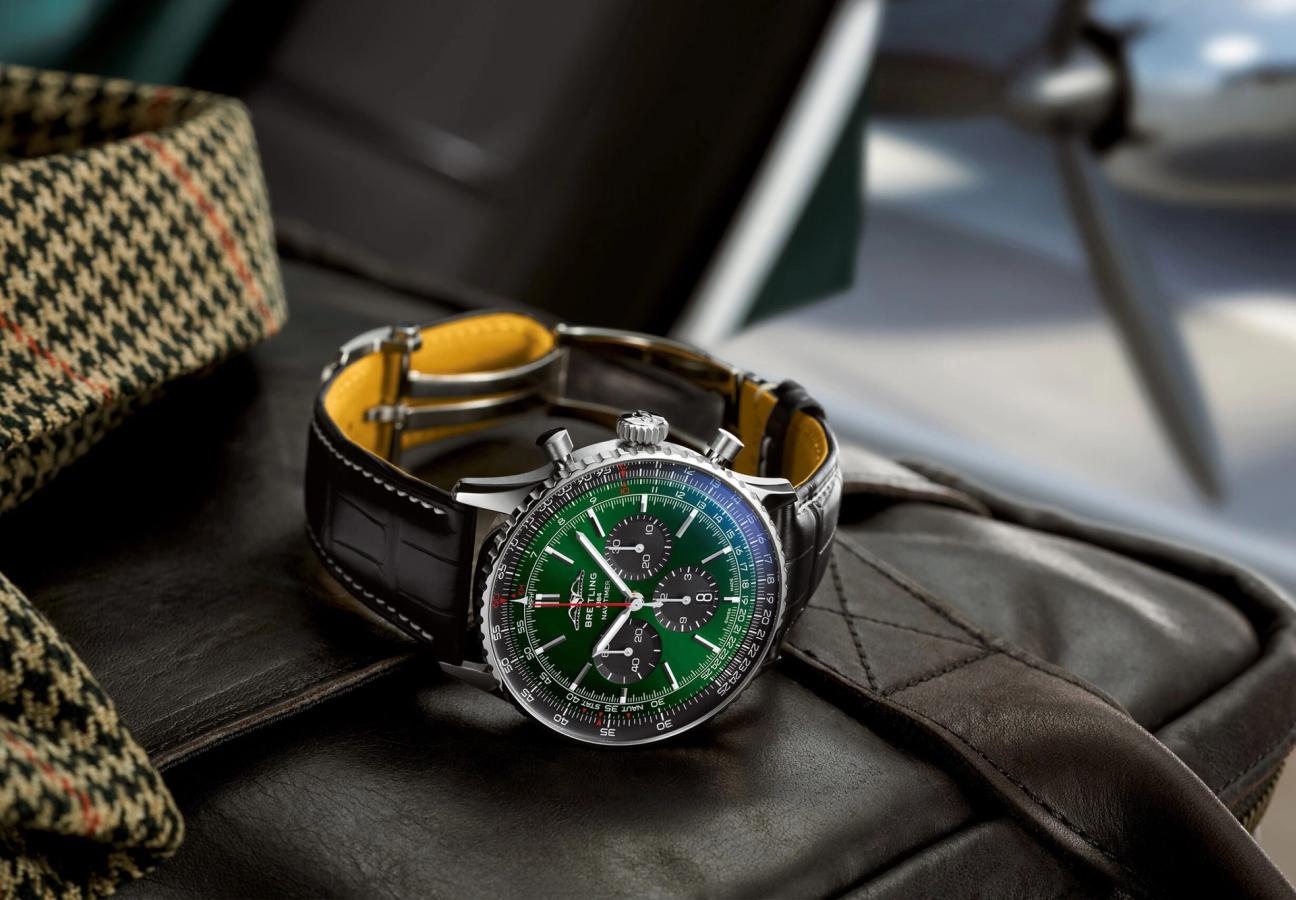

Words: Alex Doak
Back in the 1970s, Apollo 13 Astronaut Jack Swigert may have used his Omega Speedmaster to soft-boil an egg — but, rather more dramatically, it was crucial in timing a 14-second fuel burn aboard the stricken Apollo 13 lunar module. The watch was used to perfectly re-align the module for re-entry into the Earth’s atmosphere – one of so many tales of derring-do in which the chronograph has played a part.
And it’s this that makes horology’s favourite ‘complication’ (and it really is complicated to make) such a cult among watch enthusiasts. The very first flyback chronograph, which instantly resets to zero and starts again, was pioneered by Longines in the 1920s for pilots of the era’s increasingly fast aircraft to time successive flight paths without fiddling around the cockpit.
WWII RAF pilots’ lives depended on their cockpit-mounted chronographs to work out fuel reserves, and the particular brand they depended on was Breitling, from the watchmaker’s ‘HUIT’ Aviation Division (‘huit’ referring in French to its instruments’ famed 8-day power reserve).
The clean legibility and dogfight-worthiness of those on-board timers informing 1952’s civvy-street Navitimer – developed in cahoots with the world’s largest aviators’ club in the world, the Aircraft Owners and Pilots Association (in much the same vein as SCUBA bringing wartime frogman tech to local lidos, subsequently demanding civilian diving watches).

The chronograph function wasn’t new, but its combination with a logarithmic slide rule was: in circular, rotating form, allowing you to calculate all necessary flight calculations, be it speed, distance, time or fuel reserves, literally on the fly. Or in orbit for that matter; in 1962, a version of the Navitimer designed alongside NASA astronaut Scott Carpenter joined the original classic 10 years after its own lift-off.
Its revolutionary features were a 24-hour dial, because in space, orbiting the Earth several times a day, it was impossible to distinguish between day and night. Carpenter wore his so-called Cosmonaute on May 24th, during his mission aboard Aurora 7.
As Breitling CEO, Georges Kern quite rightly noted on the airborne launch today, from Zurich to Geneva, “We don’t throw the term ‘icon’ around lightly… what began as a tool for pilots went on to mean something profound to every single person who has this timepiece along for their personal journey.”
Not even its inventor could have predicted the phenomenon the Navitimer would become. But what’s especially admirable with the new 70th-anniversary collection (46, 43 or 41 mm; stainless steel or 18-karat red gold; blue, green or copper dials) is a nostalgic return of the AOPA wings to their original position at 12 o’clock. Date snobs will also be silenced, as the previously shoehorned, inter-counter window is now discreetly and satisfyingly incorporated into the bottom-counter array.
4 o’clock’s away!
Want more watches? Brands turn to the past with rose-tinted timepieces…
Become a Gentleman’s Journal member. Find out more here.


